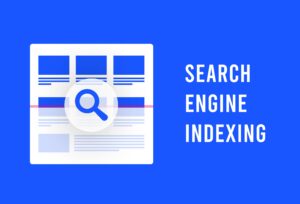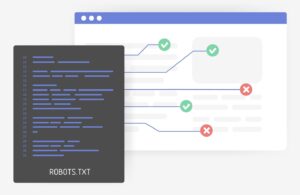
5 common tech SEO issues and how to fix them

Is your site not gaining the traffic you want and you’re not sure why? Turn your attention to the behind-the-scenes of technical SEO. When you can’t exactly pinpoint where you’re going wrong it can be frustrating and cause extra stress when trying to exercise your SEO strategy.
But worry no longer as we’ve provided you with 5 common technical SEO issues and how to fix them! Let’s get started.
What is technical SEO?
Technical SEO is a branch of SEO that targets a site’s technical aspects. It optimises your site and server so search engine bots can crawl and index your website quickly and accurately.
Often overlooked, technical SEO is integral to the success of your site. If the inner workings aren’t right, your whole strategy could collapse and you could face a whole host of issues.
Targeting technical SEO has no downsides- it increases your site’s visibility, improves user experience, and increases your rankings in the SERPs. Search engines have technical demands, and if you don’t meet these, a drop in the rankings is inevitable.
5 common issues and how to fix them!
No matter how hard you work on other aspects of SEO, if your technicalities aren’t up to scratch, that just won’t do for Google. Below you can find a list of 5 common technical SEO issues and their fixes, so your days of technical blunders are behind you.
Issue 1: Your site isn’t indexed properly

If your site isn’t indexed properly, it may as well not exist. This is because Google is unable to recognise it and therefore can’t index it properly.
Type into Google “site:yourdomain.com” (but replace “yourdomain.com” with your actual domain). Chances are, there’s an issue when your site either doesn’t show up at all, or there are more or fewer results than expected.
How to fix this
Adding your URL to Google is a good start if your site is not showing at all. If this has already been done, look for old sites that have been indexed instead of your current site, then add the appropriate redirects.
Performing a comprehensive technical SEO audit allows you to see what’s missing so you can get back on track to indexing your site. However, it could be something as simple as Google missing your site as the content is not high-quality or accessible. Or, you need to gain visibility by being linked to other authoritative sites.
Issue 2: Your website speed is slow
One of the biggest technical mistakes is having a slow site speed. Nowadays, you need to work hard to maintain your users’ attention, and if your site doesn’t load within 3 seconds, they will inevitably click elsewhere.
A slow site speed negatively impacts user experience, and therefore rankings as you’ll receive higher bounce rates. Common reasons for a slow site speed include large files, unoptimised JavaScript, server issues, or unoptimised images.
How to fix this:

A common way to fix a slow site speed is by optimising images. Imagery is vital to creating an attractive site, but image compression can help your site load faster. Or, it may be a case of implementing lazy loading where a lower-resolution image is displayed until the image can be displayed properly.
Using Google PageSpeed Insights can monitor where you’re going wrong and test your site’s speed. Enabling browser caching, optimising JavaScript and CSS or switching server providers may be some of the routes you need to take to speed up your site.
Issue 3: Crawl errors

Is your site being efficiently crawled by Google? If not, then this could cause major issues for your ranking and should be a technical SEO aspect that’s prioritised. You need to pinpoint whether the most important pages have good crawl efficiency, or whether any unwanted pages are being crawled instead.
Duplicate content is something to look out for as it confuses the crawlers and could display and index the incorrect content.
Another issue is broken links. Healthy and good-quality external and internal links tell crawlers that your site is authoritative and a good place for finding high-quality content. Broken links raise red flags for the crawlers.
How to fix this:
To monitor your links, conduct regular link and technical SEO audits to locate the problem. Or, update the URL of broken links and implement the appropriate redirects if the links are on your site. Each of your pages should have its own unique, stand-out content to avoid the issues of duplicate content.
Issue 4: Poor mobile optimisation

Mobile optimisation and the practices of mobile SEO ensure that your site is accessible and optimised for mobile users. If this is lacking in your technical SEO optimisation, then it’s likely to negatively affect rankings since Google rewards pages that are accessible and optimised on all platforms.
The world has become increasingly mobile, and your site has to adapt to this change. User intent can change between mobile and desktop users, so it’s essential to account for all audiences.
How to fix this:
To fix this, consider implementing a responsive design that renders differently on different-sized devices. This way, your content is still displayed in an accessible way to a mobile user.
Improving your mobile site speed also comes into play- as mentioned above, a slow-loading site negatively impacts the overall user experience. Or, it may be that you need to optimise your content and titles for it to appear less lengthy and risk being cut off on a mobile device.
Issue 5: Messy site structure
A messy site structure rings multiple alarm bells in the realm of technical SEO. It’s incredibly difficult to crawl and index, not to mention how difficult it is for a user to navigate through!
If your site has a multitude of pages and URLs, it can be hard to arrange them appropriately, and the site risks being littered with technical errors that are impossible to notice. Having pages all over the place is of no use to anyone, whether it be your user or Google.
How to Fix This:
Categorising is key. Not only does it help you look at the technical aspects of each page, but it in turn helps your users seamlessly navigate your site. Good internal linking also goes a long way. Interlinking the relevant pages on your site enhances its structure and will be rewarded by Google.
How Embryo can help your technical SEO
At Embryo, we recognise just how important technical SEO is to any successful SEO strategy. Our holistic approach implements every step necessary to optimise your site to the fullest and our team of dedicated experts won’t let anything go unnoticed.
Want to invest in technical SEO to optimise your website? Get in touch with us today.
FAQs
Answered by Amy Leach
Will a tech SEO fix the issues on my website for me?
Not always, a technical SEO can implement certain recommendations, however some may require development support.
Is it hard to rank highly again if technical issues have hindered this?
It is possible, identifying all technical issues on the website and ranking them based on the severity of the issue is a good point of reference to which issues will have the most impact on performance.
Can Google choose to not rank my website at all?
Yes, if your website violates any guidelines set out by Google or isn’t accessible to search engines.
What is the range of a good site speed?
Under 2.5 seconds load time is a reference for good site speed. Also when assessing site speed via page speed insights, a score of 90+ is considered good, 50-90 needs improvement, and below 50 is bad.